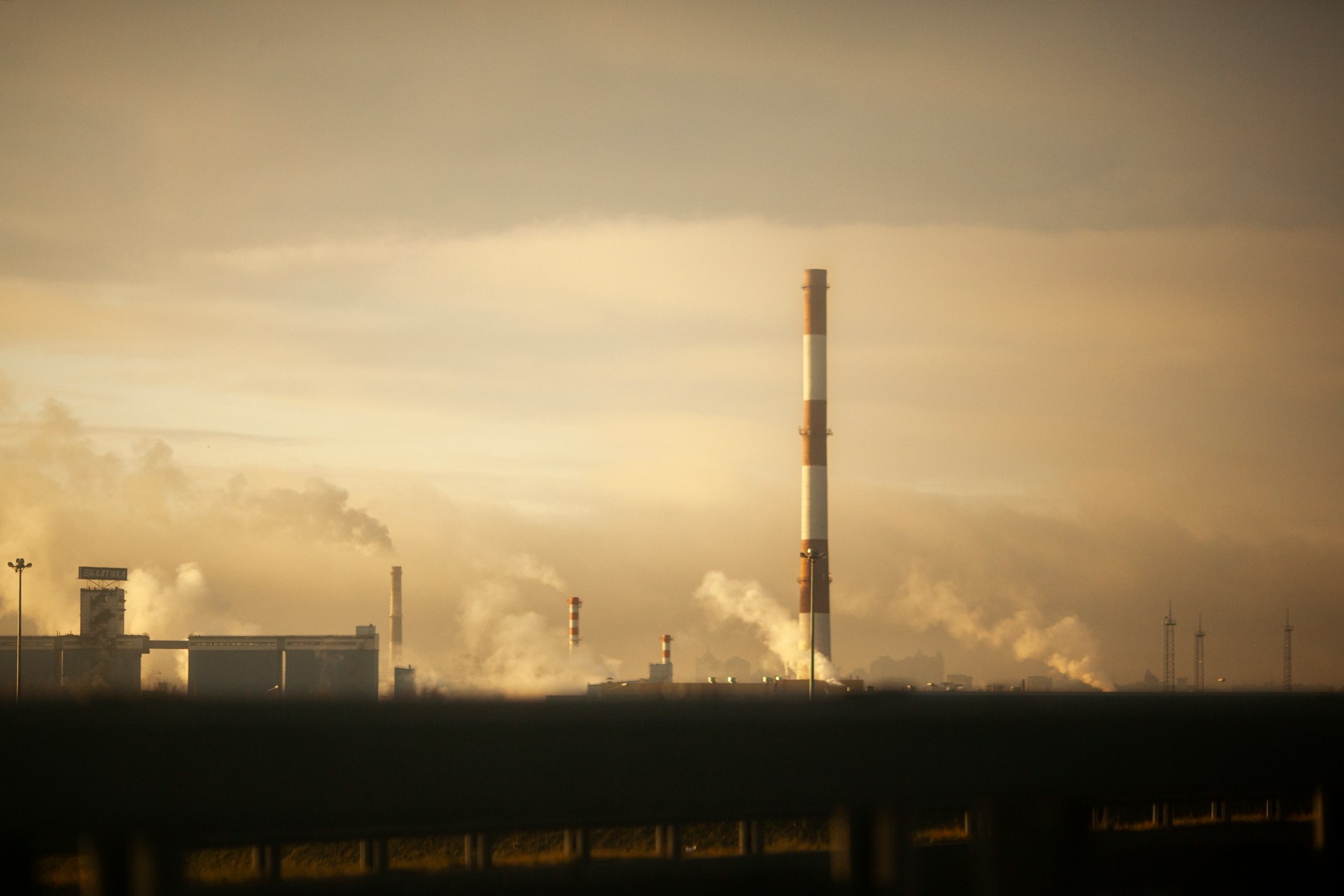By David Wiczer (Economics, Stony Brook University) and Christopher Sellers (History, Stony Brook University)
The carbon tax, long hailed as among the most promising means for curbing the greenhouse emissions that cause climate change, has often faltered politically, through disagreements over how to distribute its burdens. By itself, a tax on fossil fuels can stir controversy by being regressive, taking its largest share out of the pocketbooks of poorer households. But the June 2021 failure of the Climate and Community Investment Act (CCIA) in the New York State legislature stemmed, instead, from its alleged inequities for suburban Long Island, a richer region of the state that is also more carbon-dependent.
Alongside the tax it proposed on the distributors and sellers of fossil fuels, the CCIA would have also inaugurated a rebate system and other methods to ensure that poorer New Yorkers would not be unduly burdened by the higher gasoline, heating, and other energy costs that taxed businesses might pass along to them. Despite the legislature’s Democratic supermajority, the CCIA failed to make it to the Senate floor by session’s end in mid-June, stymied by a debate that erupted over how much of the tax’s burden would fall on suburban New Yorkers. Though 29 of state Senators signed on as bill co-sponsors, just short of a majority of 32, all six Democratic members of the Long Island delegation held off, even though many of them had been proud sponsors of other environmental legislation.
Their rationale was that as currently written, the CCIA would unfairly burden their predominantly car-driving middle-class constituents. Proponents of the legislation fired back by pointing out that tax-funded benefits would indeed flow to the less well-off households in the suburbs as well as rural areas, starting with rebates twice those for city dwellers. But so far as we know, neither side undertook any empirical analysis projecting what the relative tax burdens and rebate benefits would be, either by place (suburb versus city) or by income level.
To sketch out a more factual basis for future debate, as the CCIA is likely to be reintroduced in the next legislative session, we have gathered and analyzed data from the American Communities Survey (ACS) about carbon usage and this legislation’s impacts within suburban Long Island, as compared to New York City and the overall state. Altogether, the data indicate that:
- Even without the rebates, the highest burdens of the CCIA will fall on the richest 30-40% of suburban residents, with a progressively lesser share paid by a suburban middle class and still less by the suburban poor.
- Though suburban households would generally shoulder more of the proposed tax than city-dwellers, differences in tax burden by income within the suburbs are larger than those between the poorest and richest city-dwellers.
- The rebates do indeed offer considerable, compensatory benefits for many suburbanites ranging from the poor into Long Island’s lower-middle classes.
- In these ways, the CCIA’s version of a carbon tax would have more progressive than regressive impacts within the suburbs, as well as within the city and rural areas.
To get beneath state-level aggregates and understand geographic as well as income differences in carbon consumption and CCIA impacts, we use data from five years of the American Community Survey (ACS), 2015-2019.1 The survey data contains detailed information about household income levels as well as their most carbon intensive activities: commuting by personal automobile (though not including car use for shopping and recreation), home electricity use, and heating. We first ranked each household by their income within a particular geography (Long Island, New York City, and New York State) to come up with income percentiles for each place. Among these three places, incomes in Long Island are generally higher than in the city or rural areas. Hence, the dollar-value of income at the 40th percentile for Long Island is about the same as the 60th percentile of household incomes in the state overall. In New York City, the 60th percentile income lines up almost exactly with the state’s 60th percentile, though it’s very high-income 90th percentile is considerably higher than the 90th percentile in the rest of the state. We then examined the differential impacts of the proposed carbon fees as well as rebates across the income percentiles for each place.
As a first step toward assessing the impact of the carbon fee, we projected what it could add to annual costs of commuting by private car.2 Figure 1 plots the average additional cost of this tax on household budgets, by percentile of the income distribution for Long Island, NYC, and NYS, respectively. Among middle-class Long Islanders, represented by the central portions of the red line, the tax would add about $100 to annual commuting costs for a household in the 40th percentile of income. That is twice the amount for the same percentile along the blue line, pooling all of New York state, and over four times that for the 40th percentile on the green line, including only commuting by private car in New York City, where much more mass transit is available. Given how dependent suburbs like Long Island are on cars, it is no surprise that its residents do more driving to work.

Source: ACS, US EIA, and authors’ calculations
What was more surprising, at least to us, is just which suburban residents drive more. Those with longer commutes are neither poorer nor middle-income suburbanites but instead, the better- to best-off. The ACS data show that outside the top 20% of suburban residents and 10% of the overall state, the richer the New Yorker, the longer their commutes by car. So assuming taxed businesses passed along most of the CCIA’s costs, consumers with higher incomes would pay the lion’s share of carbon fees for gasoline. Moreover, the difference in what the poorest and richest Long Islanders would pay exceeds that between suburb and city-dwellers across all income percentiles.
Next, we combined electricity and other heating expenses to estimate the additional household costs of the CCIA’s carbon tax for these fossil fuel uses (Figure 2).3 Here as well, middle class households in the 40th percentile on Long Island (the red line) would pay an additional $240, about one and a half times as much as in the same percentile statewide and about 180% more than counterparts within the city, mostly because houses in Long Island are relatively large. Once again, the difference between carbon fees paid by the poorest versus the richest Long Islanders exceeds that between suburb and city-dwellers across all income percentiles.

Source: ACS, US EIA, and authors’ calculations
Finally, we added the fees from the first two charts and subtracted the estimated rebates from them to get a “net rebate,” which we then compared to annual household incomes across the percentiles (Figure 3). We used rebate figures of $1,156 for most of the state and $722 for NYC, also applying the CCIA’s stipulation that rebates would only go to households in the lowest 60% of income brackets statewide. Because the proposed rebates were flat while energy costs increased with income, the total net rebate for lower income households considerably surpassed that for mid-level earners, even those receiving rebates. They added as much as 8-10% to the poorest pocketbooks in suburbs and city alike. Even for those closer to middle income, the rebates more than covered passed-along costs, all the way up to nearly the 60% percentile for the city and entire state and up to nearly the 40% percentile for Long Island.

Source: ACS, US EIA, and authors’ calculations
The main sticking point for Long Island legislators nevertheless shows up here: The cut-off point for the rebate extended its benefits only to a less affluent minority of suburban residents. Whereas 60% of households in the city and overall state would receive the rebates, cushioning all or most of the law’s impact, just under 40% of suburban Long Islanders would qualify for them. And because Long Island’s middle-to-upper income households would not, also because they drive more and have larger homes, they would collectively shoulder the greatest share of those costs that businesses passed along. Still, in proportion to their incomes, the ACS data suggest that the financial burden they faced would be comparatively small to miniscule: The worst affected percentile pays about $3 for every $1,000 they earn. Yet the specter of higher gasoline and heating costs for more than half of Long Island households was enough to scare off even Long Island’s most avowedly environmentalist state senators from supporting the CCIA.
The CCIA’s fate in future legislative sessions may well hinge on whether its sponsors are able to win over some Long Island senators who opposed the bill in the spring of 2021. They may wind up conceding more compensatory benefits for those better- or best-off Long Islanders who, our data show, consume the most fossil fuels. But ACS figures also suggest that the CCIA’s rebate system benefits not just a majority of city dwellers but also a large swathe of Long Islanders. After decades of stagnating wages and concentrating wealth, Long Island is not as middle-class as it used to be; it includes many lower-to-middle income as well as poor households for whom the rebates would provide a boon. Through them, the CCIA offers an effective way of blunting the regressive effect of a carbon tax, by cushioning vulnerable households in suburbs, city, and countryside alike from the cost hikes it could bring.

